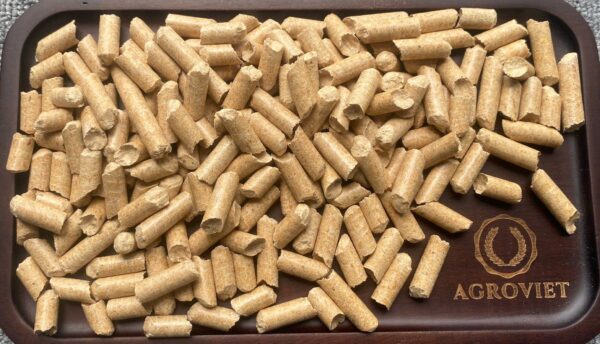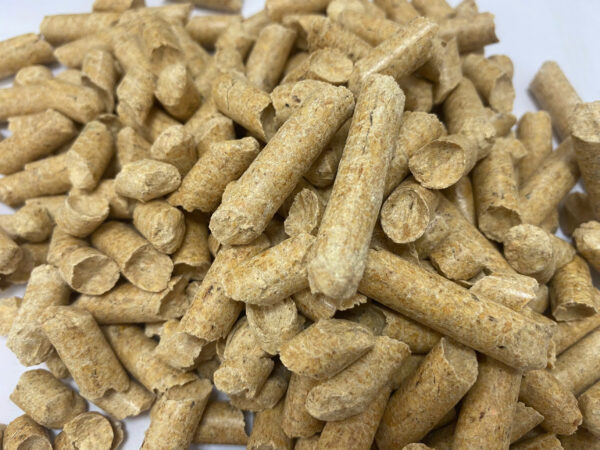Choosing the right pet bedding is not only about ensuring the comfort of your pets but also about finding a solution that offers value for money. With a variety of bedding materials available, pet owners often wonder which option provides the best balance of cost, efficiency, and comfort. Pine wood pellets have become a popular choice due to their affordability, absorbency, and sustainability. But how do they compare to other common pet bedding materials in terms of cost?
In this article, we’ll dive into the cost comparison between pine wood pellets and other pet bedding materials, helping you make an informed decision that benefits both your pets and your wallet.

1. Initial Cost of Pine Wood Pellets vs. Other Bedding Materials
When comparing the cost of different bedding materials, it’s important to consider both the upfront cost and the longevity of the product. Let’s examine how pine wood pellets measure up against some of the most commonly used pet bedding options: paper bedding, straw, and clay-based litter.
a. Pine Wood Pellets

Pine wood pellets are generally very affordable. A standard 40-pound bag of pine wood pellets typically costs around $5 to $10, depending on the brand and supplier. This price may seem higher compared to some other bedding materials, but the absorbency and longevity of the pellets allow them to last longer, which reduces the frequency of replacement. Ultimately, this results in lower long-term costs.
b. Paper Bedding
Paper bedding is often sold in smaller quantities, typically in 10- to 20-liter bags, with prices ranging from $10 to $20 per bag. While paper bedding is soft and comfortable for pets, it doesn’t last as long as pine wood pellets due to its lower absorbency. This means that you’ll likely need to replace paper bedding more frequently, increasing the overall cost over time.
c. Straw Bedding
Straw bedding is one of the more affordable options, with prices ranging from $5 to $10 per bale. However, its low absorbency means it needs to be replaced more often than pine wood pellets. Additionally, straw can become moldy when exposed to moisture, leading to faster spoilage and higher replacement costs.
d. Clay-Based Litter
Clay-based litter is commonly used for cats and is sold in bulk at prices ranging from $10 to $20 for a 20-pound bag. While clay-based litter is known for its clumping ability, it is not as sustainable or long-lasting as pine wood pellets. The cost of clay-based litter can quickly add up, especially since it tends to create more waste and requires frequent replacement.
2. Longevity and Replacement Frequency
When determining the true cost of pet bedding, the replacement frequency plays a crucial role. Bedding that needs to be replaced more often can significantly drive up costs, even if the initial price is lower.
a. Pine Wood Pellets
One of the main advantages of pine wood pellets is their longevity. Thanks to their high absorbency, they can last for longer periods before needing to be replaced. As the pellets absorb moisture, they break down into sawdust, which continues to absorb liquid and control odors. Depending on the type of pet and the size of the enclosure, pine wood pellets may only need to be replaced once a week, or even less frequently.
b. Paper Bedding
Paper bedding, while soft and comfortable, has a lower absorbency rate compared to pine wood pellets. This means it tends to become soggy and odoriferous more quickly, requiring frequent changes—sometimes every few days. Over time, the need for constant replacement can make paper bedding more expensive than its initial cost suggests.
c. Straw Bedding
Straw bedding is relatively inexpensive upfront, but it doesn’t offer the same absorbency as pine wood pellets. Straw tends to accumulate moisture and develop odors quickly, requiring frequent replacement—often several times per week. This leads to higher ongoing costs, despite the low initial price.
d. Clay-Based Litter
Clay-based litter clumps when exposed to moisture, making it easy to scoop out waste. However, because it is not as absorbent as pine wood pellets, it often needs to be replaced entirely every few days to prevent odors and maintain a clean environment for your pet. This frequent replacement increases the overall cost.
3. Waste Reduction and Environmental Impact
The amount of waste produced by pet bedding also plays a role in cost efficiency and environmental sustainability. Bedding materials that generate less waste can save money over time and reduce your environmental footprint.
a. Pine Wood Pellets
Because pine wood pellets are so absorbent, they generate less waste compared to other materials. The pellets break down into sawdust as they absorb moisture, meaning you can use them longer before needing to replace them. Additionally, pine wood pellets are biodegradable and compostable, making them an environmentally friendly option.
b. Paper Bedding
While paper bedding is biodegradable, it tends to produce more waste due to its lower absorbency. The frequent changes required to keep the bedding clean result in larger amounts of discarded material. Although it can be composted, the sheer volume of waste makes paper bedding less environmentally friendly and more costly over time.
c. Straw Bedding
Straw is also biodegradable, but like paper bedding, it generates a lot of waste due to its low absorbency and frequent replacement needs. Straw that has become wet or moldy must be discarded, and the constant turnover of material makes it a less sustainable and more expensive choice in the long run.
d. Clay-Based Litter
Clay-based litter is one of the least environmentally friendly options, as it is not biodegradable and often ends up in landfills. The production of clay litter involves strip mining, which has significant environmental impacts. Additionally, because clay litter needs to be replaced frequently, it generates more waste, leading to higher long-term costs and environmental consequences.
4. Odor Control and Hygiene
Odor control is a key factor in pet bedding selection, and some materials perform better in this area than others. Bedding that effectively controls odors will require fewer changes and contribute to long-term cost savings.
a. Pine Wood Pellets
Pine wood pellets are known for their natural odor control. The natural pine scent helps neutralize odors from pet urine and feces, keeping your pet’s living area fresh for longer. This reduces the frequency of changes and makes pine wood pellets a cost-effective and hygienic option.
b. Paper Bedding
Paper bedding, while soft and comfortable, does not offer the same level of odor control as pine wood pellets. Once the paper becomes wet, it tends to retain odors, which can lead to more frequent bedding changes and higher costs.
c. Straw Bedding
Straw is not particularly effective at controlling odors. Because it absorbs moisture poorly, it tends to develop a strong smell quickly, requiring frequent changes to maintain a clean environment. This increases the overall cost and makes straw less desirable for odor-sensitive pets and owners.
d. Clay-Based Litter
Clay-based litter offers decent odor control, particularly if it contains added fragrances. However, once the litter becomes saturated with moisture, it can quickly begin to smell, necessitating complete replacement. This adds to the ongoing costs and can contribute to an unpleasant environment if not managed regularly.
5. Conclusion: Pine Wood Pellets Offer Long-Term Savings

When it comes to choosing the right bedding for your pet, pine wood pellets offer a compelling balance between cost, performance, and sustainability. While the initial price of pine wood pellets may be comparable to or slightly higher than other materials, their superior absorbency, longevity, and odor control result in long-term savings. Additionally, the eco-friendly nature of pine wood pellets, with their reduced waste and biodegradable composition, makes them a responsible choice for environmentally conscious pet owners.
In comparison, paper bedding, straw, and clay-based litter may seem cheaper upfront but often require more frequent replacement, driving up costs over time. Furthermore, these materials tend to produce more waste and have a larger environmental impact, making pine wood pellets the better option for both your wallet and the planet.
By investing in pine wood pellets for your pet’s bedding, you’re making a smart financial choice that also supports sustainability. Whether you’re caring for small animals, cats, or other pets, pine wood pellets provide a high-quality, cost-effective, and environmentally friendly solution for pet bedding needs.
